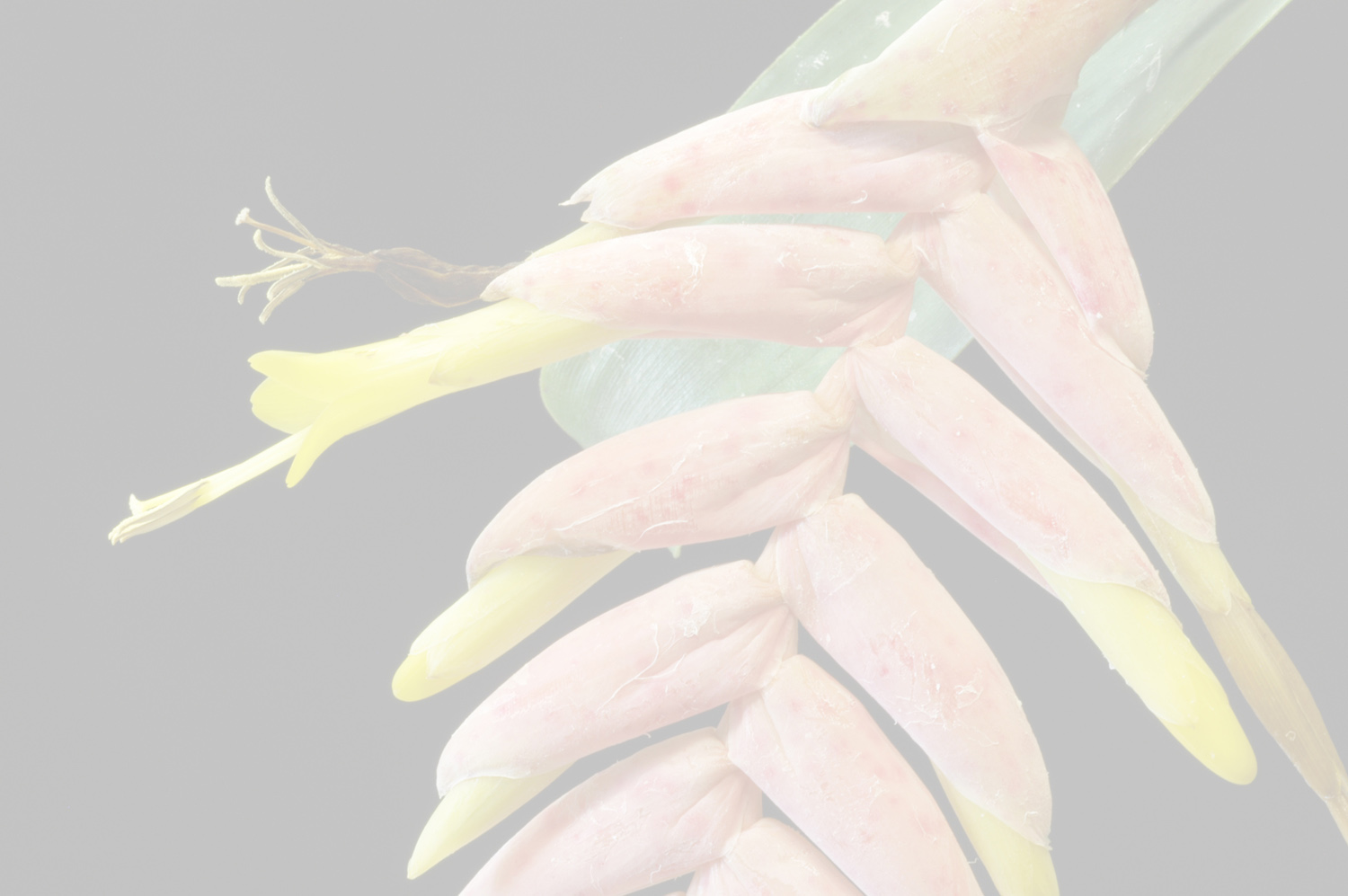

plant acaulescent, flowering 80–160 cm long, with a funnelform, 40- 70 cm, tall rosette of many lustrous grass-green leaves. leaves thin coriaceous, 40–68 cm long, often much exceeded by the peduncle, often reddish or purple-mottled beneath; sheath large but not very distinct, merging into the blades, ovate (-oblong), 8–20x6–10 cm, densely appressed-lepidote and appearing pruinose, caused by pale, jigsaw puzzle-like arranged scales, pale brown to castaneous at the base; blade arching in upper half, ligulate, 30–50 x 4.5- 7 cm, subrounded, then triangular-attenuate, acute or acuminate, punctulate-lepidote with minute brown scales (when dry). inflorescence laxly or subdensely and distichously (?) tri- or quadripinnate of 8–20 branches, glabrous; peduncle erect, 50–90 cm long, 5–9 mm in diam., glabrous, mostly entirely hidden by bracts, but sometimes exposed in upper part, often rose-red; peduncle bracts erect, imbricate or the upper ones sometimes remote, stiff chartaceous, the lower ones linear-lanceolate, the upper ones more elliptic, attenuately subacute or obtuse and acuminate, soon less than twice as long as the internodes, very sparsely lepidote or subglabrous to punctulate at the apex, often dull-rose; axis slightly flexuous, angled, reddish; primary bracts as the upper peduncle bracts, but the upper ones much smaller and apiculate, spreading with the axillary branches, often much exceeding the sterile part of the branches, red; lower branches often subdigitate of 2–4 racemes; racemes short pedunculate (0.5–1 cm), (linear-) lanceolate, complanate, 3–13 x 1–1.6 cm, acutish, densely and distichously 4–17-flowered, with one or a few sterile bracts at the apex; rachis slightly flexuous, quadrangular; floral bracts erect, densely imbricate, so narrow as to expose the rachis in part, at least after anthesis, thin-coriaceous, with veined surface when dry, ovate, 1.7–2.3 cm long, 2–4 times as long as the internodes, about equaling or exceeding the sepals, subacute or apiculate, ecarinate or appearing carinate when dry, incurved, glabrous, yellowish or with red. flowers contiguous, sub sessile or on 0.5–3 mm pedicels; sepals thin-coriaceous, with veined surface when dry, ovate-oblong, 1.6–2 cm long, acutish or obscurely apiculate, shortly connate, adaxial ones fleshy and bluntly angled at the base, glabrous or with a few minute appressed scales outside, sparsely lepidote inside; petals ligulate, 2–2.5 cm long, with or without two small ligules at the base (not found in the type), blue; ligules obovate-oblong, ca 2.5 mm long, half adnate to the petals, entire, rounded. stamens included, about as long as the pistil, filaments slender, flat, broad and adnate to the petals at the base, anthers basifixed, linear-sagittate, ca 3.5 mm long. pistil: ovary ovoid, abruptly contracted into the slender style, stigmas linear. fruits broadly cylindric, to 2.5 cm long, just exceeding the bracts, abruptly rounded and short-beaked.Edited from : Gouda 1987. Bromeliaceae (subfamily Tillandsioideae) in Görts-van Rijn, A.R.A. (ed.) Flora of the Guiana\'s Series A: Phanerogams.